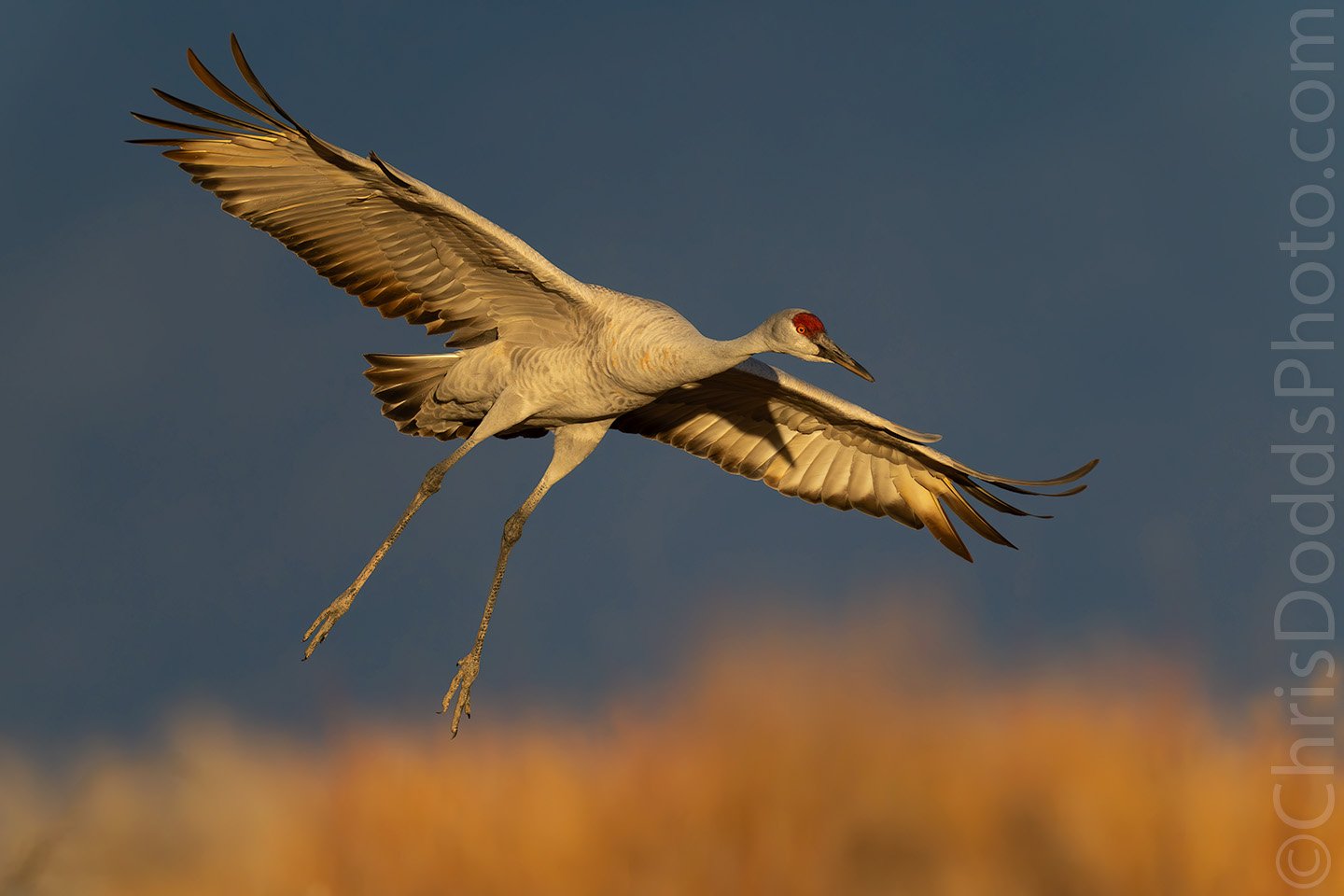A Sandhill Crane landing at dusk against the golden backdrop of blurred Cottonwood trees during my recent Better than Bosque Workshop in New Mexico.
This year, we were fortunate to enjoy golden light and ideal wind direction for most of my Better than Bosque workshop. The Cottonwoods displayed their autumn foliage, creating stunning backgrounds when the light became perfect - smile.
Sandhill Crane flying in golden light (Grus canadenis, Grue du Canada, SACR) from my recently concluded Better than Bosque workshop. Bernardo Wildlife Area (Ladd S. Gordon Waterfowl Complex), Bernardo, New Mexico, USA. Image Copyright ©Christopher Dodds. Sony a9 III Mirrorless camera & Sony FE 600mm f/4 G Master OSS Lens with Sony FE 2X Teleconverter @1,200mm ISO 8,000, f/8 @ 1/5,000s Manual exposure. Full frame image.












